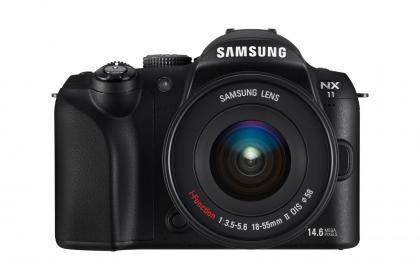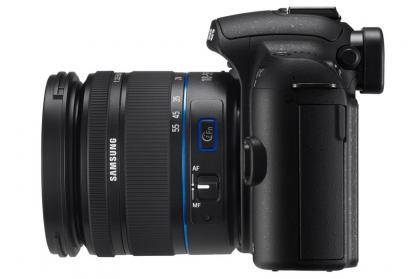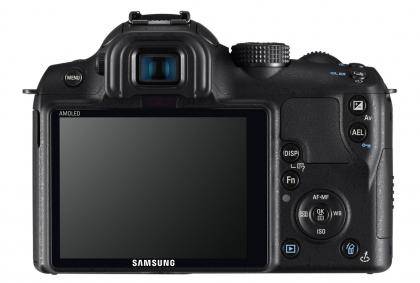The Samsung NX range of mirrorless system cameras isn't as well known as the Panasonic G, Olympus PEN or Sony NEX ranges, although judging by the disappointing NX100 , perhaps it deserves to stay that way. The NX11 seems more promising, though, addressing our primary criticisms of the NX100 by including a flash and an optically stabilised kit lens.

Unlike the NX100 and most other mirrorless system cameras, the NX11 looks like an SLR after a crash diet rather than a super-sized compact. Lens aside, it's much slimmer than any SLR, and peering through the viewfinder to see an LCD screen reveals its true nature. This screen isn't quite as big and detailed as the Panasonic G3 's electronic viewfinder but it's not far behind. Unlike the G3, the NX11's viewfinder automatically switches on when the camera is raised to the eye. Both cameras also have impressive 3in screens. While the NX11's AMOLED technology produces richer colours, the G3's is articulated – a great feature for shooting video.

Here you can see the handy i-Function button on the lens
The NX11 has a button marked i-Function on its lens – a feature we first saw on the NX100. We weren't sure about it then but we must admit that the idea is growing on us. It works on the assumption than the camera will be used in autofocus mode for the vast majority of the time, and allows the lens's focus ring to be reassigned to ISO speed, white balance, exposure compensation, shutter speed or aperture. The i-Function button cycles around these options, and the large lens ring was quicker to operate than the conventional controls that duplicate these functions elsewhere on the camera.

One of the best sets of controls we've seen of late
There's quick access to other settings, too. There are dedicated buttons to access the autofocus point, drive mode, exposure lock and depth-of-field preview, and pressing the Fn button reveals other key settings without needlessly duplicating options that are available elsewhere. We really like the way advanced settings, such as self-timer delay and flash compensation, are presented next to the relevant basic settings rather than being buried in the menu. It's arguably the best control layout of any camera this side of £700.